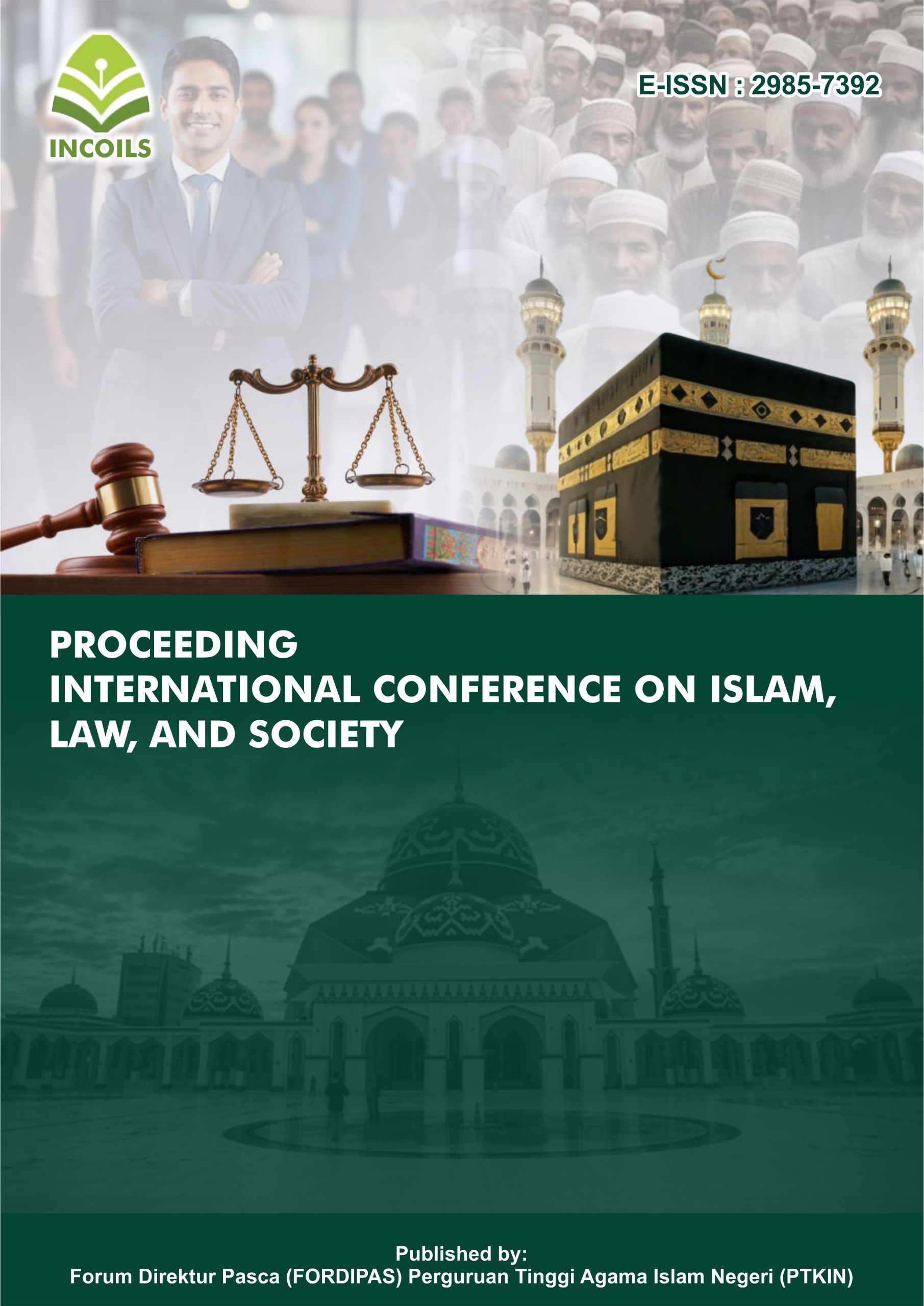Islamic English in TED Talks: Misconceptions of Islam and Muslim Life
DOI:
https://doi.org/10.70062/incoils.v2i1.82Keywords:
English Teaching and Learning, Improve the quality of workers, Indonesian Migrant WorkersAbstract
This research intends to show the presence of Islamic English used for a well international Islamic speaker, as well as its purposes, emphasizing the necessity of keeping Arabic Islamic words in use, particularly among Muslims. In the field of Islam propagation and inter-religious speeches, the talks of a major contemporary international youtube channel TED TALK on the theme Misconceptions of Islam and Muslim Life were picked. Three speeches are chosen to verify that the findings are consistent. From the three speeches, found Islamic terms, namely halal, Jihad, haram, and ‘ayb which still have misconceptions in the understanding of publics. The findings revealed that there is a hazy understanding of Islamic culture, which leads to incorrect meanings of borrowed phrases. Restricted definitions of Islamic words may lead to a limited knowledge of Islamic culture, resulting in a picture of Muslims as homogeneous individuals who ignore the fact that Muslims come from a variety of cultural backgrounds.
References
AbdusSalaam A. S. (1999). Islam and Language. Kuala Lumpur, Malaysia : Al-Hilal Publishing.
Al-Azzam, B. (2005). Certain terms relating to Islamic observances: Their meanings with reference to three translations of the Qur'an and a translation of Hadith. PhD Thesis, Durham University. http://etheses.dur.ac.uk/1775/
Al Jallad, N. (2010). The concept of" shame" in Arabic: bilingual dictionaries and the challenge of defining culture-based emotions. Language design: journal of theoretical and experimental linguistics, 12, 0031-57.
Al-Faruqi, I.R. (1986), Toward Islamic English, Virginia: International Institute of Islamic
Thought.
Ali, H. M. B. M. (2007). Islamic terms in contemporary English. English Today. 23(2), 32. https://doi.org/10.1017/S0266078407002064
ALMARWAEY, A. O., & AHMAD, U. K. (2021). Semantic Change of Hijab, Halal and Islamist from Arabic to English. 3L: Southeast Asian Journal of English Language Studies, 27(2).
Al-Zuhayli, W. (1995). Al-wajiz fi usul al-fiqh. Syria: Dar al-Fikr.
Baker, M. (2018). In other words: A coursebook on translation (3rd ed.). New York: Routledge.
Baker, P., Gabrielatos, C. & McEnery, T. (2013). Discourse analysis and media attitudes: The representation of Islam in the British press. Cambridge: Cambridge University Press.
Braj B. Kachru, “TheAlchemy of English” [1990], inAshcroft, Griffiths, and Tiffin, eds., The Post-Colonial Studies Reader (pp.272-275), 274.
Cambridge Advanced Learner’s Dictionary, Cambridge: Cambridge University Press, 774
(2008).
Danzaki, M. A. (2015). Semantic change in Arabic loanwords in Hasua. Proceedings of the 2nd International Conference on Arabic Studies and Islamic Civilization. http://dx.doi.org/10.20473/mozaik.v19i2.14584
Dictionary, M. W. (2002). Merriam-webster. On-line at http://www. mw. com/home. htm, 8.
HAKIM, R. T. E. The Concept of Jihad in Islam. IOSR Journal Of Humanities And Social Science (IOSR-JHSS) IOSR Journal Of Humanities And Social Science (IOSRJHSS) Volume, 21, 35-42.
HamkaHaq, 2009, Islam Rahman Untuk Bangsa, RMBOOKS, Jakarta.
Hasan, M. M. (2014). Islam's encounter with English and Ismamail al-Faruqi's concept of Islamic English: A postcolonial reading. American journal of Islamic social sciences, 31(2), 1-21.
Haspelmath, M. & Tadmor, U. (2009). Loanwords in the world’s languages: A comparative handbook. Berlin: Walter de Gruyter.
HilmyBakarAlmascaty, 2001, Panduan Untuk Akrivis Gerakan Jihad, GemaInsani Press, Jakarta.
Jasper, D. (Ed.). (1993). Translating religious texts: Translation, transgression and interpretation. New York: St Martin's Press.
Julul, A. A., Rahmawati, N. M., Kwary, D. A. & Sartini, N. W. (2019). Semantic adaptations of the Arabic loanwords in the Indonesian language. MOZAIK HUMANIORA. 19(2), 135-147.
Lallmamode, P., & Zalika, A. (2009). Awareness of Islamic English among Muslim students in Malysia. Language and Culture: Creating and Fostering Global Communities, Malaysia.
Miller, R. (2015). Trask’s historical linguistics. New York: Routledge.
Othman, K., & Ismail, A. I. (2018). Islamic English in Islamic Talks. In MATEC Web of Conferences (Vol. 150, p. 05081). EDP Sciences.
QuraishShihab, M, 2001, Wawasan al-Qur`an: TafsirMudhu`I atas Pelbagai Persoalan Umat, Bandung: Mizan.
Rifah, A. I. A. M. (1989). Islamization of Knowledge: General Principles and Work Plan.
Schumann, J. H. (1976). Social distance as a factor in second language acquisition. Language learning, 26(1), 135-143.
Shihab, M. Quraisy. 2005, Wawasan al-Quran: Tafsir Maudu'i Atas Pelbagai Persoalan Umat, Vol. I., Mizan, Bandung.
TED Talk "Inside the Mind of a Former Radical Jihadist”. Retrieved 24 December 2021 https://www.ted.com/talks/manwar_ali_inside_the_mind_of_a_former_radical_Jihadist/reading-list?referrer=playlist-misconceptions_of_islam_and_mu.
TED Talk “The Beauty And Diversity of Muslim Life. Retrieved 24 December 2021 https://www.ted.com/talks/bassam_tariq_the_beauty_and_diversity_of_muslim_life?referrerplaylist-misconceptions_of_islam_and_mu.
TED Talk “What My Religion Really Says About Women”. Retrieved 24 December 2021. https://www.ted.com/talks/alaa_murabit_what_my_religion_really_says_about_women/transcript?referrer=playlist-misconceptions_of_islam_and_mu#t-6917.
Downloads
Published
How to Cite
Issue
Section
License

This work is licensed under a Creative Commons Attribution-ShareAlike 4.0 International License.







